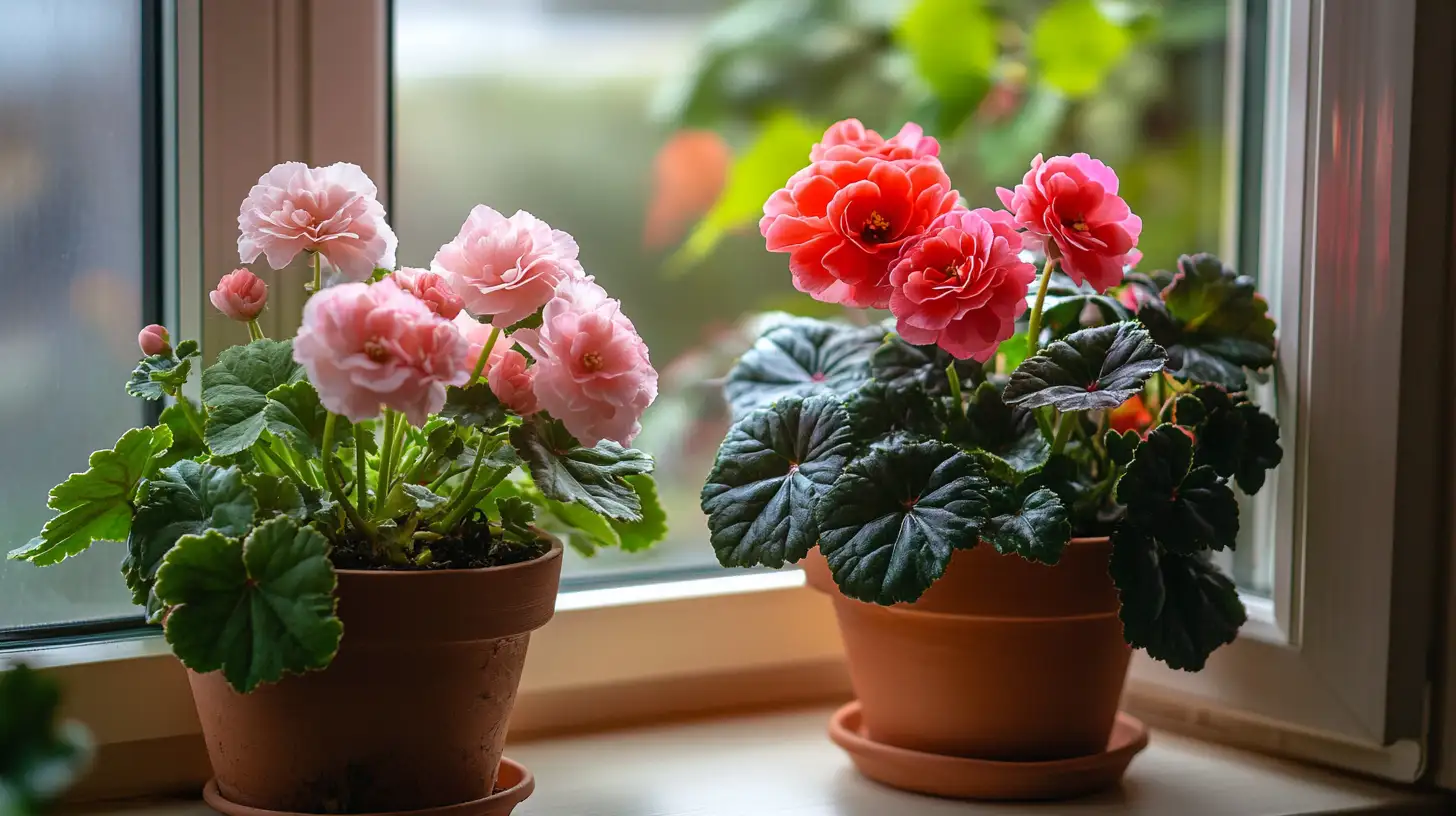Table of Contents
Growing begonias in pots is one of the most accessible and rewarding ways to bring color, texture, and personality into your outdoor space. Whether you’re working with a shaded front porch, a sunny balcony, or even a small windowsill garden, container-grown begonias can thrive with the right setup. Their stunning blooms and striking foliage make begonias in pots a top choice for gardeners seeking beauty without the fuss.
These plants pair beautifully with low-maintenance outdoor potted plants like coleus and ivy, or can be styled alongside shade-loving favorites like hostas for lush, layered displays. In this guide, you’ll uncover 15 practical tips to help your begonias in pots flourish—from choosing the right potting mix to overwintering strategies. Whether you’re new to container gardening or looking to refine your skills, these expert insights will ensure your begonias in pots look their best all season long.
🪴 Tip 1: Choose the Right Pot for Healthy Roots
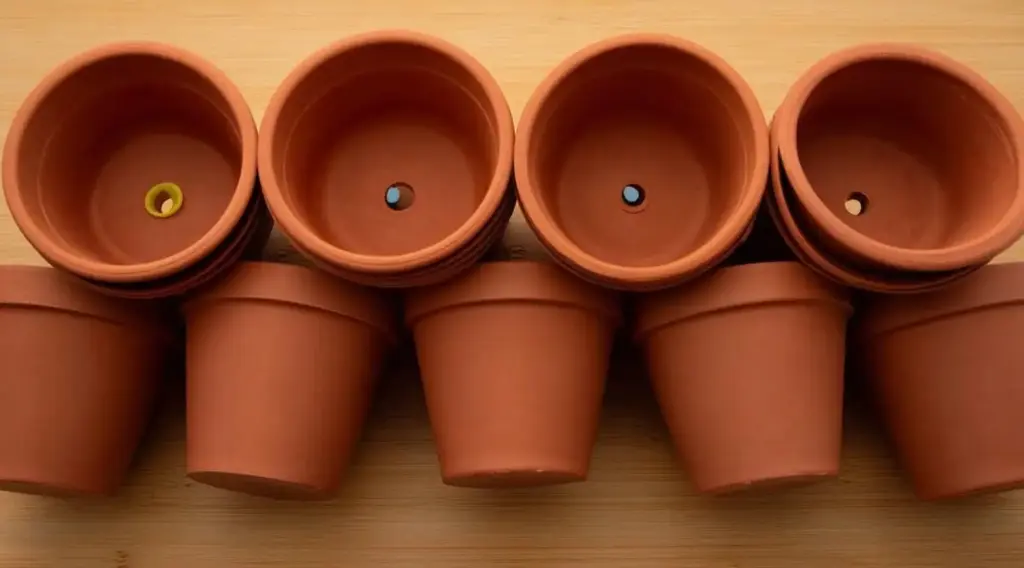
The first step to thriving begonias in pots is picking containers that prioritize root health and aesthetic appeal. Opt for smaller pots that are just slightly larger than the begonia’s root ball—this prevents excess soil from retaining moisture, which can lead to root rot.
Decorative ceramic or terracotta pots with multiple drainage holes are ideal. Drainage is non-negotiable: begonias hate soggy conditions. If your favorite decorative container lacks holes, nest a plastic liner pot with drainage inside it to maintain airflow around the roots.
✅ Pro Tip: Match the pot color to your begonia’s bloom or foliage for a visually striking effect.
🪴 Tip 2: Use Light, Well-Draining Soil (No Black Earth!)
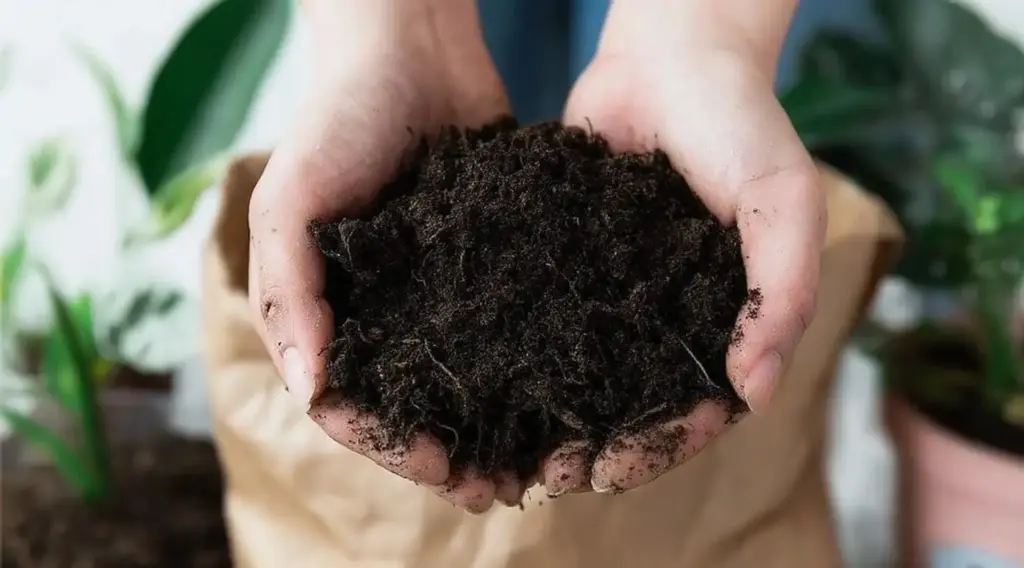
Begonias prefer a fluffy, breathable soil mix that drains well. A high-quality, peat-based potting mix with perlite or coconut coir is perfect. Avoid using “black earth” or dense garden soil—it holds too much moisture and compacts quickly in containers, suffocating the roots.
For extra protection, consider mixing in a small handful of horticultural charcoal to prevent fungal buildup and improve drainage.
🧪 DIY Mix: 2 parts peat moss or coco coir, 1 part perlite, 1 part compost = ideal begonia potting mix.
🪴 Tip 3: Master the Art of Watering
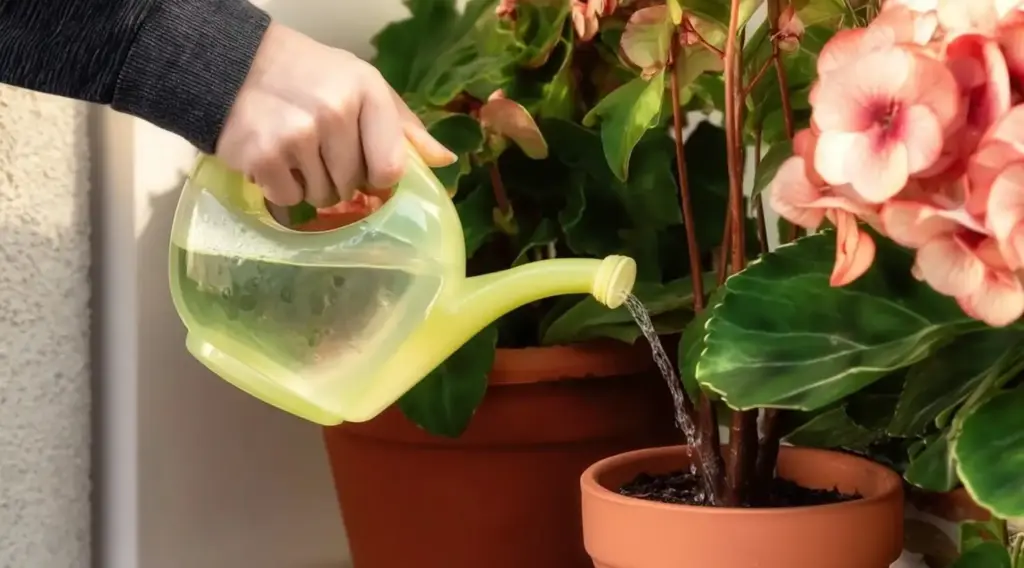
Watering is a fine balance. Begonias in pots like evenly moist—but never soggy—soil. Check the soil surface with your finger: if it feels dry to the touch, it’s time to water. Water thoroughly until excess flows from the drainage holes.
Always water at the base to avoid splashing foliage, which can invite fungal diseases. If your container is small, try bottom-watering by placing the pot in a shallow tray of water for 30 minutes to let it soak upward.
🚫 Avoid: Overhead watering, letting pots sit in standing water, or watering on a rigid schedule.
🌤️ Tip 4: Match Light Conditions to the Right Location
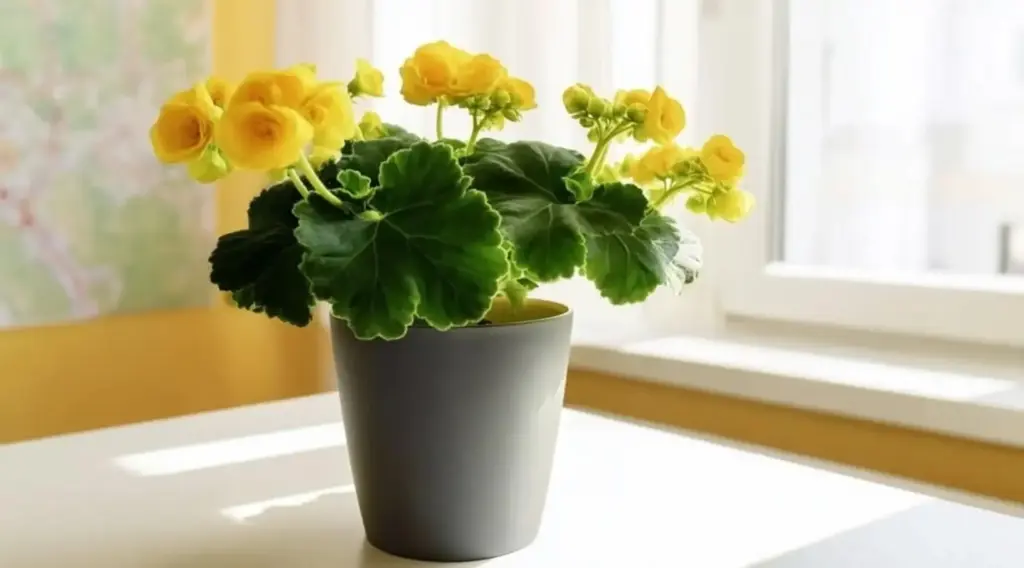
Light is a make-or-break factor for container-grown begonias. Most varieties prefer bright, indirect light or partial shade, making them ideal for shaded patios, covered porches, or dappled garden corners. Direct, intense sun can scorch leaves and blooms, especially during the hottest part of the day.
Look for east- or west-facing spots that get soft morning or late afternoon light. South-facing areas are best reserved for sun-tolerant varieties or should be filtered with shade cloth.
🌿 Best Locations: Covered patios, shaded balconies, under pergolas, or near light-filtering trees.
🧬 Tip 5: Choose the Right Variety for Sun or Shade
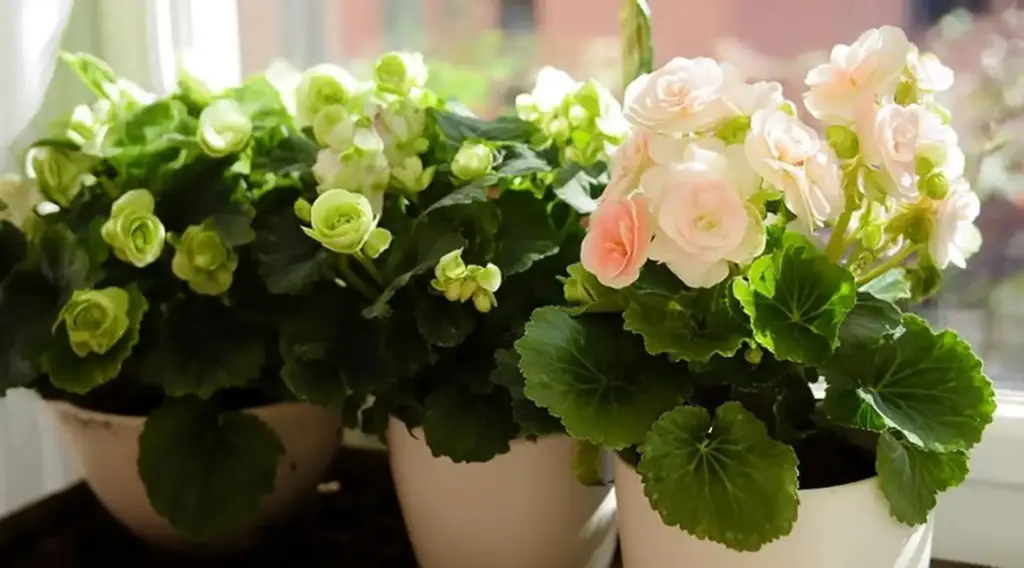
Not all begonias are created equal when it comes to sunlight. Selecting a variety that aligns with your available light ensures strong growth and vibrant blooms. Here’s a quick cheat sheet:
- Full Shade (<4 hrs sunlight/day): Rex Begonias — prized for their swirling, colorful foliage. These thrive without much sun and are great for foliage-focused containers.
- Partial Shade (4–6 hrs/day): Tuberous Begonias — known for their large, rose-like flowers. They love dappled light and bloom beautifully without direct sun.
- Full Sun (6+ hrs/day): Wax Begonias — especially those with bronze or dark foliage. These are heat-tolerant and perfect for sun-drenched patios.
🎨 Want color and flexibility? Try mixing different types in coordinated pots suited to varied light zones.
🌿 Tip 6: Fertilize Lightly but Consistently
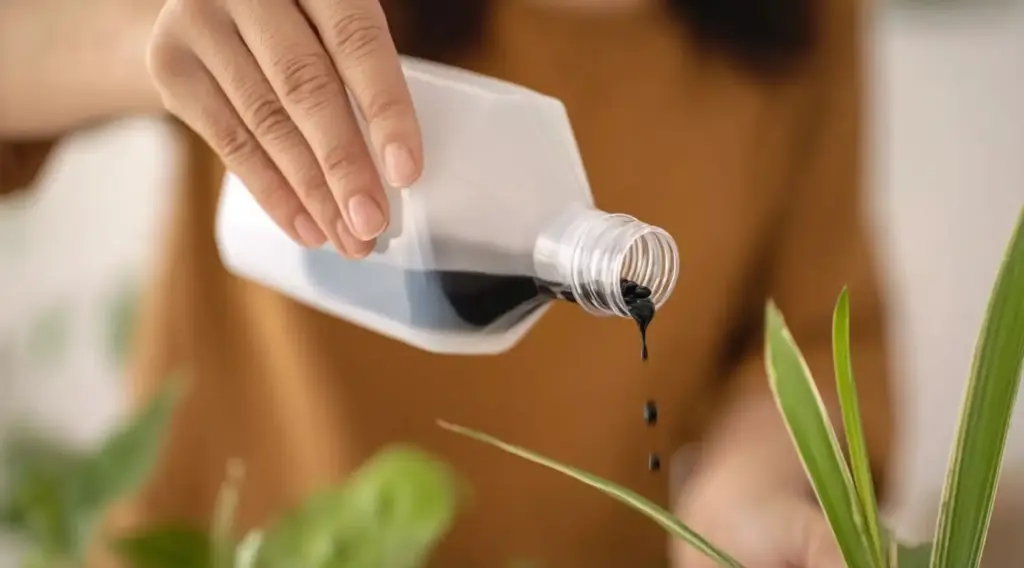
Because begonias in pots rely entirely on the nutrients in their container soil, regular feeding is key to lush growth and repeated blooms. Use a balanced liquid fertilizer (e.g., 20-20-20) or a bloom booster (e.g., 15-30-15) diluted to half strength.
Feed every two weeks during the active growing season, but never on dry soil—water your pot first, then fertilize. Avoid foliar feeding unless your product is specifically labeled for it, as begonia leaves can be sensitive.
🚿 Tip: Always aim for the base of the plant to keep leaves clean and disease-free.
✂️ Tip 7: Regular Maintenance Keeps Plants Thriving
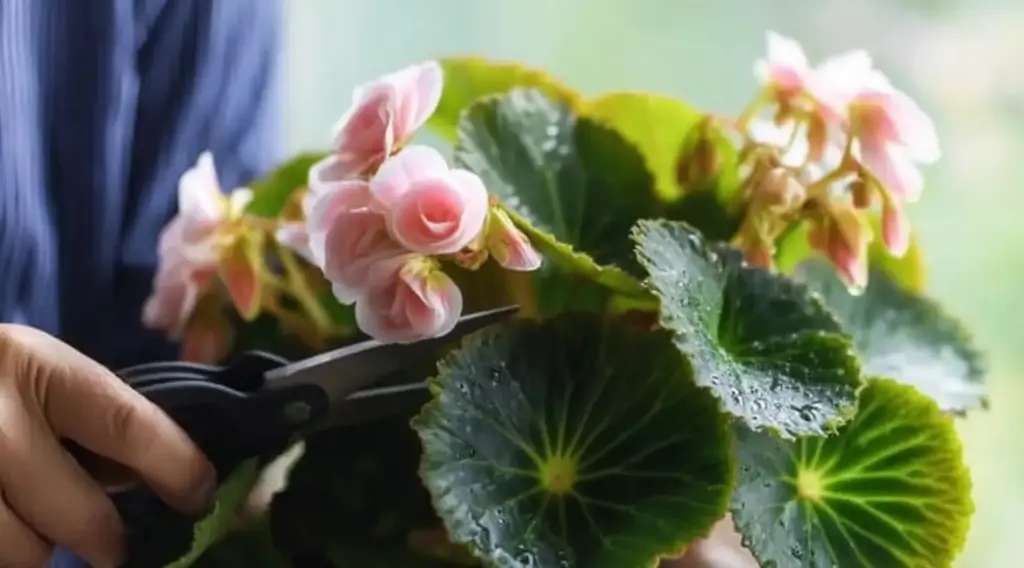
Begonias are relatively low-maintenance, but a bit of routine care goes a long way—especially in pots, where every detail shows. Make it a habit to:
- Remove yellow or damaged leaves
- Deadhead spent flowers to encourage more blooms
- Gently prune back any overgrown stems
- Keep the soil surface tidy and debris-free
Because begonias in pots are often placed where they’re closely viewed (like patios or entryways), even minor cleanup efforts dramatically improve their appearance.
✂️ Pro Tip: Don’t dig deep into the plant for hidden leaves—you risk damaging it. Focus on what’s visible.
🐛 Tip 8: Watch for Common Pests and Diseases
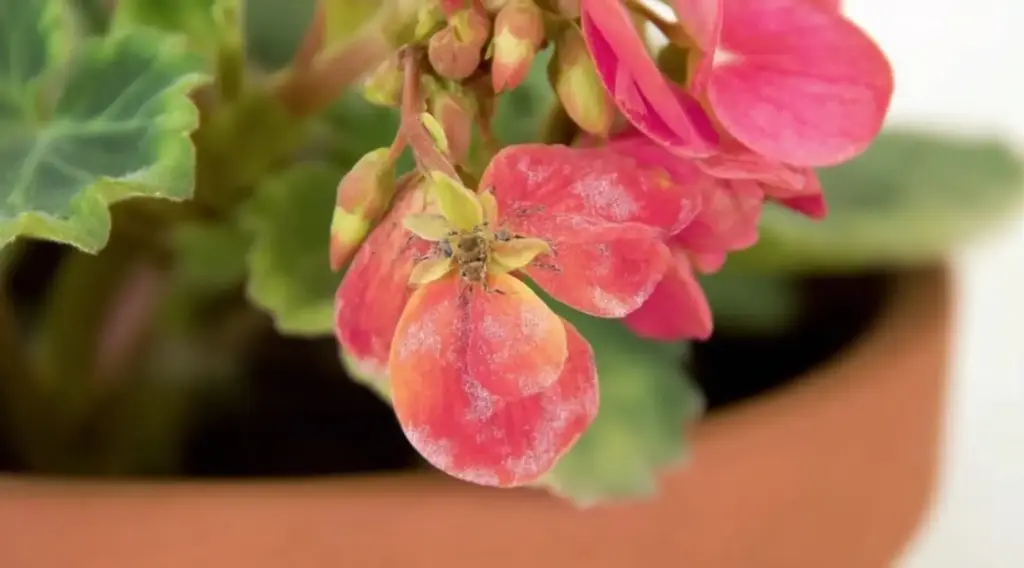
Container begonias are vulnerable to a few pests and diseases, particularly if air circulation is poor or foliage stays wet. Here’s what to look for:
- Spider mites: Tiny pests that spin webs on leaves. Combat with neem oil or insecticidal soap—test a leaf first.
- Powdery mildew: Appears as grayish dust on leaves. Prevent by watering at the base and using copper-based fungicides if needed.
- Aphids, mealybugs, and thrips: Can distort leaves and slow growth. Remove with a strong water spray or insecticidal treatment.
⚠️ Important: If infestation or disease takes over, replace the soil entirely and start fresh the next season.
❄️ Tip 9: Overwintering Begonias Indoors
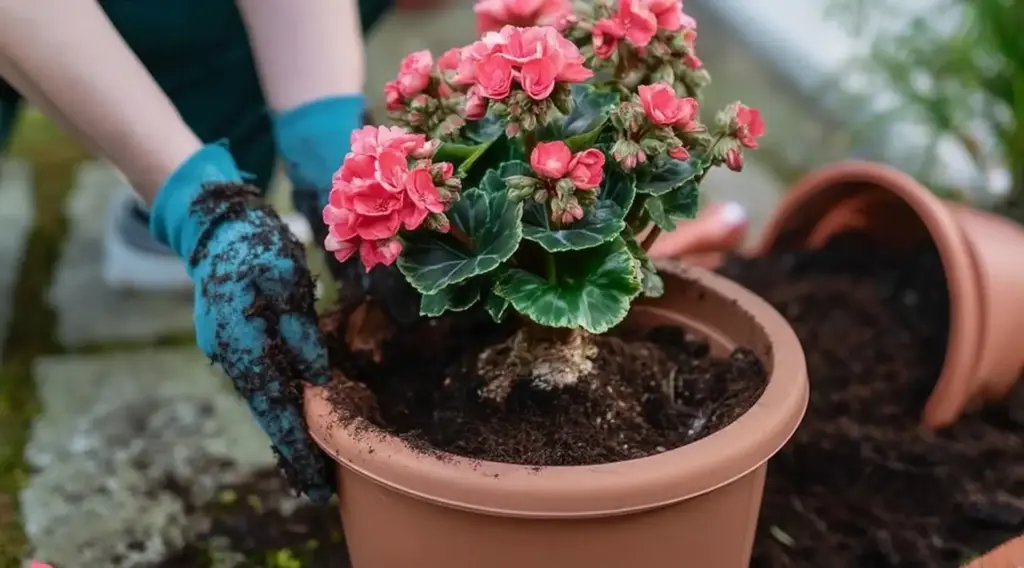
In colder climates, begonias in pots won’t survive winter outdoors. But you can bring them inside to overwinter successfully. Here’s how:
- For small pots, simply move them to a bright, indirect indoor spot.
- For larger containers, gently dig up the begonias, trim them back, and repot in fresh soil in smaller pots.
Ease off on watering and hold off on fertilizing during the winter months. Be sure the plant is pest-free before bringing it indoors—never risk introducing insects to your houseplants.
🏡 Bonus Tip: Use a higher-quality indoor potting mix to avoid fungus gnats.
🎨 Tip 10: Embrace the “Thriller, Filler, Spiller” Design Formula
Want show-stopping begonias in pots? Follow the classic container design technique:
- Thriller: The eye-catching centerpiece (e.g., elephant ear or a tall coleus)
- Filler: The body of the arrangement—this is where begonias shine
- Spiller: Plants that trail over the sides (e.g., golden lysimachia or ivy)
Begonias can even serve as all three depending on the variety. Tuberous types with big blooms often act as thrillers. Wax begonias make excellent fillers, while trailing varieties like Belleconia Soft Orange are perfect spillers.
🌺 Design Hack: Repeat colors from the thriller and spiller in your begonia choice to tie everything together.
🌼 Tip 11: Try These Show-Stopping Begonia Varieties
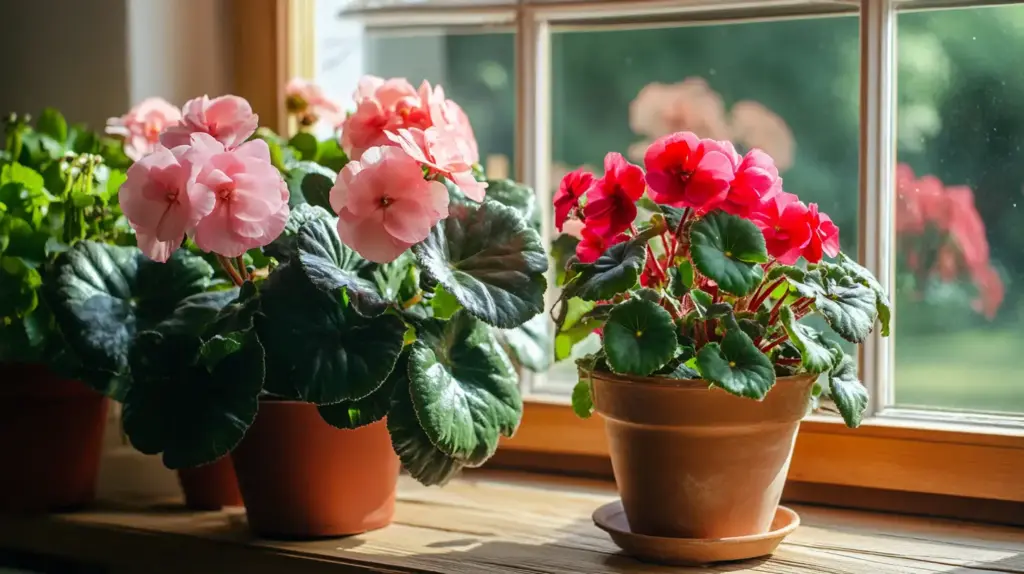
With hundreds of begonia types available, it’s easy to find one that suits your garden’s vibe and lighting conditions. Here are five exceptional varieties to consider:
- Nonstop Red
Tuberous begonia with lush, rose-like red blooms. Makes a bold filler in any container design and thrives in part shade. - T-Rex Painter’s Palette
A rex begonia with dramatic swirls of burgundy, pink, and white. Best for foliage lovers and full shade spots. - Amstel Blitz
A rieger begonia with bright yellow flowers and waxy foliage. Ideal as a filler or thriller for containers in partial sun. - Belleconia Soft Orange
Trailing tuberous type with delicate peach blooms. Perfect as a spiller in hanging baskets or layered pots. - Ambassador White
A compact wax begonia covered in crisp white flowers with yellow centers. Excellent in group plantings or minimalist white-themed containers.
🎯 Tip: Combine contrasting colors and textures from these varieties for a designer-style effect in your pots.
🎨 Tip 12: Coordinate Colors for Visual Impact
Want your container to pop? Thoughtful color pairing makes all the difference with begonias in pots. Here are some quick combinations that work beautifully:
- Match bold red begonias with cobalt blue pots for high contrast
- Use white begonias in charcoal or black containers for an elegant monochrome look
- Pair yellow varieties with turquoise or rustic terracotta for a sun-kissed feel
Or, throw out the rulebook and create a vibrant “tropical punch” mix that’s full of life and personality.
🌈 Bonus: Tie in container colors with outdoor decor elements like door frames, cushions, or railings for cohesion.
🌿 Tip 13: Add Companion Plants for Texture and Balance
Begonias don’t have to go it alone. Pair them with other container-friendly plants for a layered, textured look:
- Coleus – vibrant, colorful leaves that blend or contrast beautifully with begonias
- Majesty Palms – perfect thriller plant to tower above your begonias
- Elephant Ear (Alocasia) – large, dramatic leaves make great vertical accents
- Golden Lysimachia – trailing foliage with bright green-gold tones to spill over edges
🪴 Design Idea: Mix Ambassador White begonias with golden lysimachia and a purple-leaved coleus in a matte black container for instant curb appeal.
🧺 Tip 14: Get Creative with Hanging Baskets
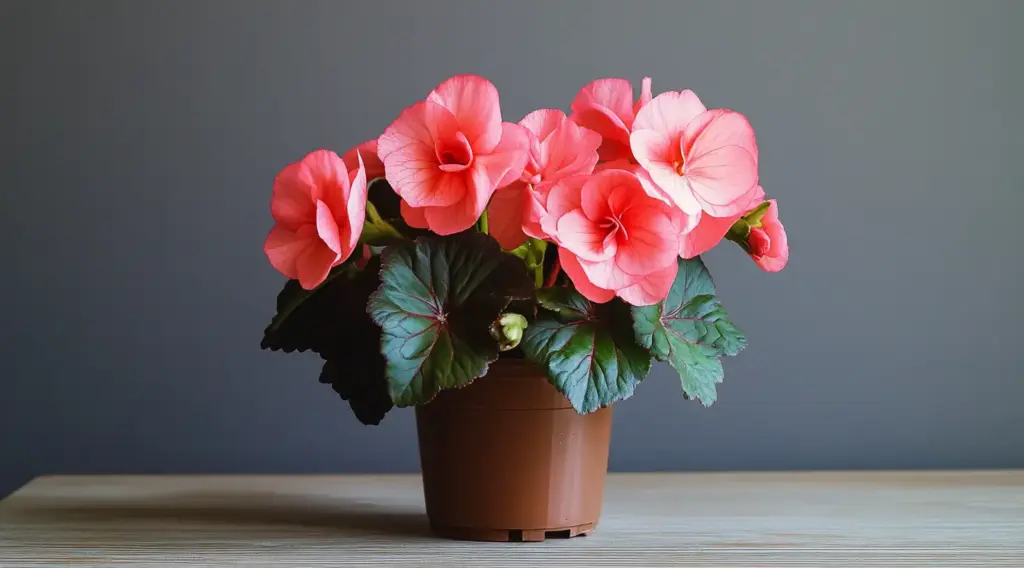
Begonias aren’t just for tabletops—they make dazzling hanging displays too. For best results:
- Choose trailing varieties like Belleconia, Dragon Wing Red, or Bossa Nova Rose
- Use coconut coir-lined baskets with evenly spaced drainage
- Mix trailing begonias with upright fillers like wax begonias for a full, globe-like effect
Hanging containers bring begonias to eye level, showing off their blooms and foliage up close—perfect for patios and balconies.
🧵 DIY Tip: Tuck wax begonias into holes along the sides of a coir basket for a 360° blooming sphere.
🌟 Tip 15: Trust Your Eye—Design Is Personal
There’s no right or wrong way to plant begonias in pots. While design formulas and color theory help, what matters most is that you love your container. If a certain combo makes you smile, go with it!
Gardening is an art—and begonias are your colorful, versatile paint.
💡 Inspiration: Keep a photo diary of your favorite pot combinations year to year so you can build on what works.
❓ Frequently Asked Questions About Begonias in Pots
🌿 What type of soil is best for begonias in pots?
Begonias thrive in light, well-draining soil. A high-quality potting mix with added perlite or coco coir works well. Avoid garden soil or “black earth,” which can retain too much moisture and cause root rot.
💧 How often should I water potted begonias?
Water when the top inch of soil feels dry. Begonias prefer consistent moisture, but not soggy soil. Always water at the base and avoid wetting the leaves to reduce the risk of fungal diseases.
☀️ Can begonias in pots grow in full sun?
Some varieties, like wax begonias with dark foliage, tolerate full sun. However, most begonias prefer partial shade or bright, indirect light. Match the variety to your available light for best results.
🌱 What are the best companion plants for begonias in containers?
Great companions include coleus, golden lysimachia, palms, and elephant ear. These plants offer complementary textures, heights, and colors that enhance the visual impact of container arrangements.
❄️ How do I overwinter begonias in pots?
Bring small containers indoors to a bright, indirect spot. For large pots, dig up and repot the begonias, and reduce watering during winter. Ensure the plants are pest-free before moving indoors.
🐛 What pests or diseases affect begonias in pots?
Common issues include spider mites, powdery mildew, aphids, and mealybugs. Prevent problems by watering correctly, keeping leaves dry, and using neem oil or insecticidal soap when needed.
🎨 How do I design a container using begonias?
Use the “thriller, filler, spiller” formula: begonias work great as fillers, but some varieties can also be used as thrillers or spillers. Pair with contrasting plants and choose container colors that complement your begonias.
🌸 Conclusion
Growing begonias in pots isn’t just about filling containers—it’s a creative expression that transforms patios, balconies, and porches into blooming sanctuaries from spring through fall. With just a little attention to pot selection, well-draining soil, and smart watering habits, your begonias in pots can thrive and steal the show in any outdoor setting.
Whether you’re styling a shaded balcony or a sunny front porch, there’s a begonia variety perfectly suited to your light conditions. Mix them with other shade-loving favorites like hostas or ferns in pots for layered texture and color. Don’t forget to apply container design tips like the “thriller, filler, spiller” formula, which makes begonias in pots stand out as both feature and filler plants. Ultimately, the joy of gardening begonias lies not just in the blooms—but in the journey of cultivating beauty, one container at a time.

